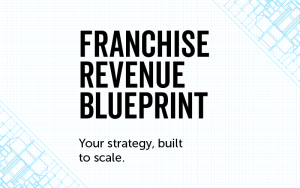Data is everywhere. You can’t browse a website, make a purchase, or even scroll your phone without generating tons and tons (and tons) of data. Every click, interaction, and swipe leaves behind an indelible digital footprint, and the same is true for your customers. Every marketer has access to a treasure trove of customer data.
But the real question is this: It’s 2025, do you know where your data is? Chances are, you’re sitting on a gold mine of first-party data without even realizing it. Let’s explore where you’re already looking, where you might not have thought to look, and how you can enhance your customer data collection strategy to power smarter, data-driven marketing efforts.
First-Party Data: An Overview
First-party data is like having a backstage pass to your audience’s preferences and behaviors. This is the data that you collect directly from your customers and prospects through your owned channels. This data is worth its weight in gold, since it’s coming directly from the source. Unlike third-party data, it’s intimate, reliable, and uniquely yours.
Related: A Guide to First- and Third-Party Data
It’s Closer Than You Think
It’s likely that you’re already collecting first-party data without giving it a second thought. Here are some common sources:
- Website Analytics: Every visitor to your site leaves behind valuable insights. From the time spent on each page to click-through rates (CTR), this is an invaluable resource for understanding user behavior.
- Email Campaigns: Open rates, click-through rates, and replies offer a direct line into your audience’s interests.
- Purchase Data: What products are they buying? How often? This data – often found in non-marketing operational systems – helps you anticipate future needs.
- Surveys and Forms: Your customers’ actual opinions and interests (the ones that they took the time to share) are the ultimate intel. Whether it’s a newsletter signup, a request for a quote, or a gated content download, these interactions provide insight into your customers’ interests and intent.
- Social Media Interactions: Comments, likes, and shares are more than just vanity metrics – if you map them out, they’re helpful data points that provide insights into your customer base’s psychographics.
- CRM Data: Your CRM is a powerhouse of customer insights, providing a comprehensive view of each customer’s relationship with your business.
Related: Are You Collecting the Right Data from Your Website Visitors?
Best Practices for First-Party Data Collection
To get the most out of your first-party data, follow these best practices:
- Ensure Privacy Compliance: This is first because it is critical. Always respect your customers’ data and adhere to the compliance requirements that are in place based on your industry.
- Be Transparent: Along with being compliant, it’s good business to clearly communicate how you collect and use data. No one likes getting tricked into providing information; and once tricked, they’re twice shy to cooperate in the future. Spell out your processes so that your audiences are aware of what data is being collected.
- Stay Organized: Implement a robust data management system that can easily track and report the copious amounts of data you’ll be collecting so that you don’t drive yourself crazy trying to make sense of it all.
Third-Party Data Collectors: Expanding Your Horizons
While it’s essential to mine first-party data, third-party data can elevate your marketing by extending your audience reach or filling in data gaps. Third-party data is gathered by external sources and sold to businesses looking for broader insights.
What to Look For
Not all third-party data is created equal, so be careful as you consider various sources. Here’s what to focus on:
- Relevance: Ensure that the data aligns with your target audience – otherwise, you’re spending money to chase prospects who are less likely to buy.
- Quality: Work with reputable providers to avoid outdated or inaccurate information. It’s important to start with clean data to power smart marketing decisions.
- Compliance: Always verify that your data collection methods are legal and ethical.
Examples of Third-Party Data and How to Use Them
- Demographic Data: Data like age, gender, ethnicity, and income are often collected by third parties. Cross-reference these with your first-party data to identify new market segments or fill in information gaps.
- Behavioral Data: Understand interests and purchase intents from activities across the web. If you know certain segments are in the market for your product, you can target them with an offer curated just for them.
- Geographic Data: Tailor campaigns to specific audiences based on their locations and promote the specific locations that are most convenient to them.
Since it is a larger and broader pool of data, third-party data fills in gaps where your first-party data falls short, like discovering untapped markets or validating your existing audience insights.
Why the Right Data Matters
The saying “garbage in, garbage out” (GIGO) couldn’t be truer for data-driven marketing. The quality and relevance of your data directly impact the effectiveness of your campaigns. So, start smart with the best data you can get your hands on!
Strike a Balance
Finding the sweet spot between first-party data and third-party data is the key to data-driven marketing success. While first-party data provides precision and depth, third-party data offers breadth and scalability. Together, they create a comprehensive picture of your audience and amplify your marketing capabilities through strategies like:
- Enhanced Targeting: Use first-party data to personalize messages and third-party data to expand reach in a direct mail or email campaign.
- Better Insights: Merge internal data with external data for a holistic view that catches larger trends occurring in the marketplace. Use this to inform your email messaging so that it’s right on point.
- Informed Decision-Making: Leverage a mix of data to forecast behavior and adapt marketing strategies accordingly. You can use these insights to create a physical plus digital (phygital) campaign that uses QR codes with a customized call-to-action that drives people to your website.
Time to Deploy Your Data
Data is dead until you bring it to life with your marketing strategies. At Ironmark, we specialize in turning data into actionable insights for data-driven marketing. Our services include:
- Lead Intelligence: We harness LeadsID, a tool that identifies 40-50% of your actual website visitors, providing you with names, emails, mailing addresses, and more that you can use to target visitors with relevant, resonant content.
- Predictive Analytics and Data Services: Identify your most promising prospects by collecting first- and third-party data, then use these capabilities to reach them at the right time with the right messaging.
- Data-Driven Marketing Campaigns: Take the guesswork out of your multi-channel campaigns with precise attribution tracking at every touchpoint from digital ads to direct mail.
Whether it’s first-party data, third-party data, or both, we’re here to help you harness your data’s full potential and transform information into insight – and insight into conversions. Now that you know where your data is, let’s use it to drive your marketing further.




